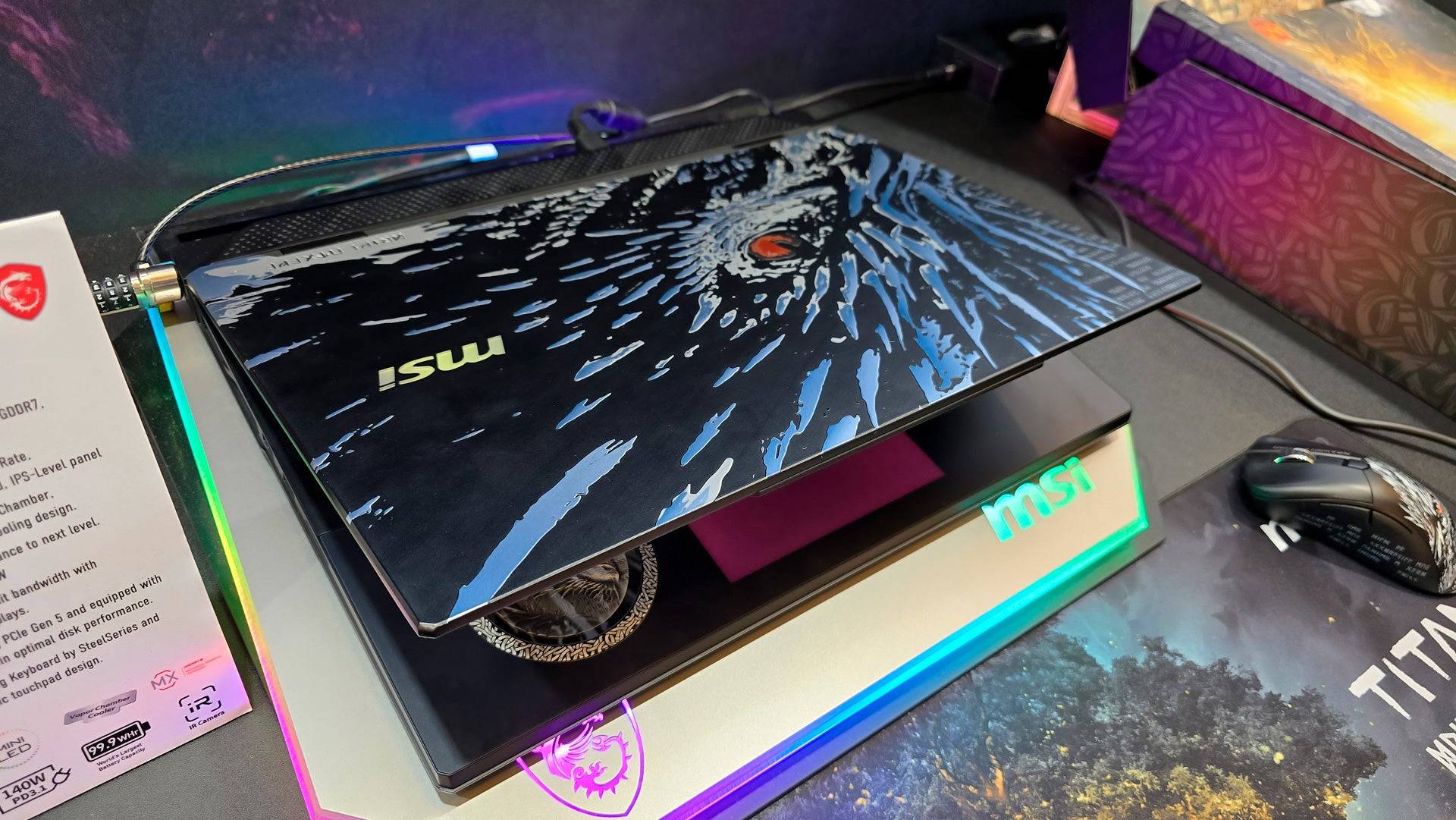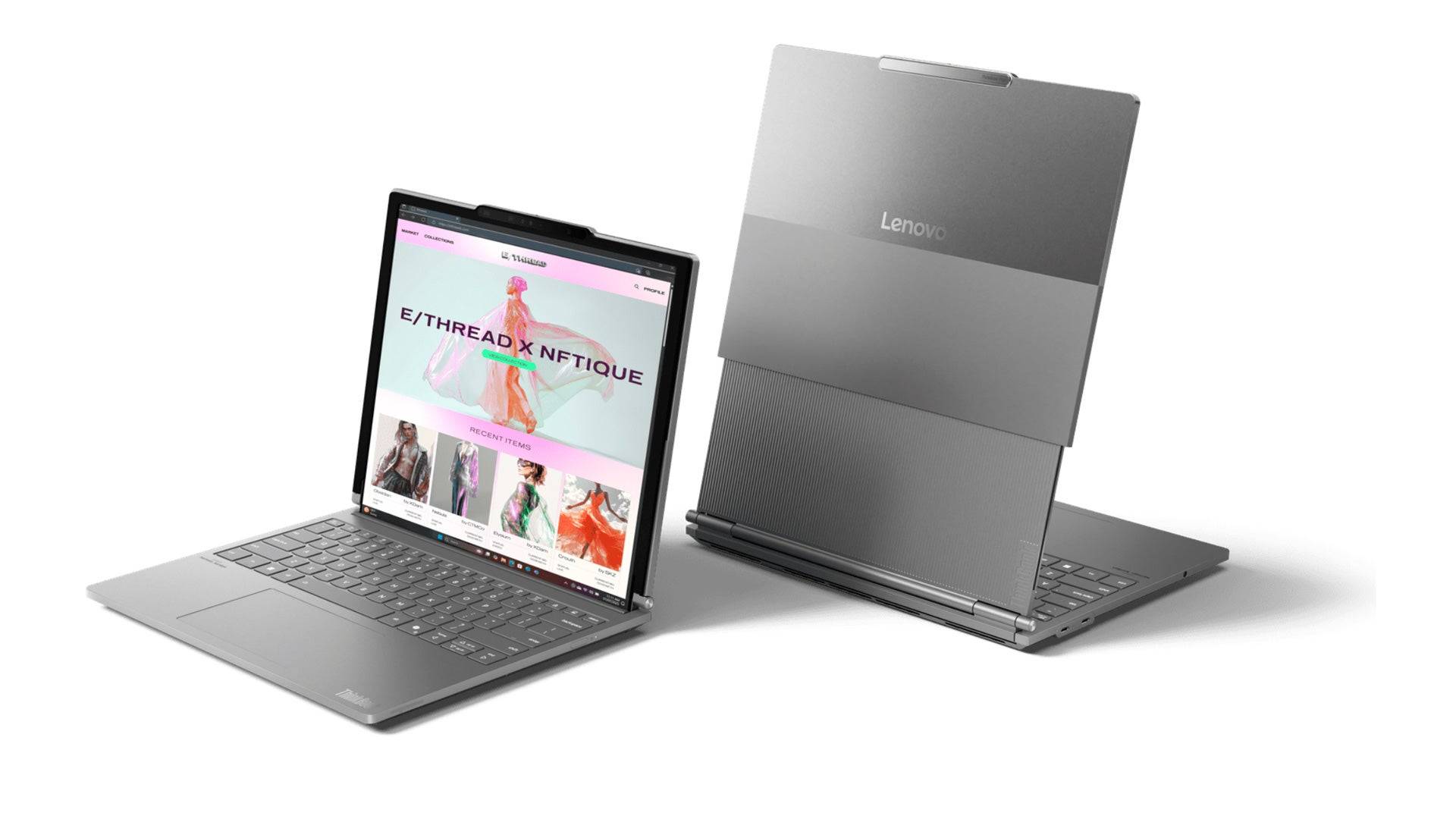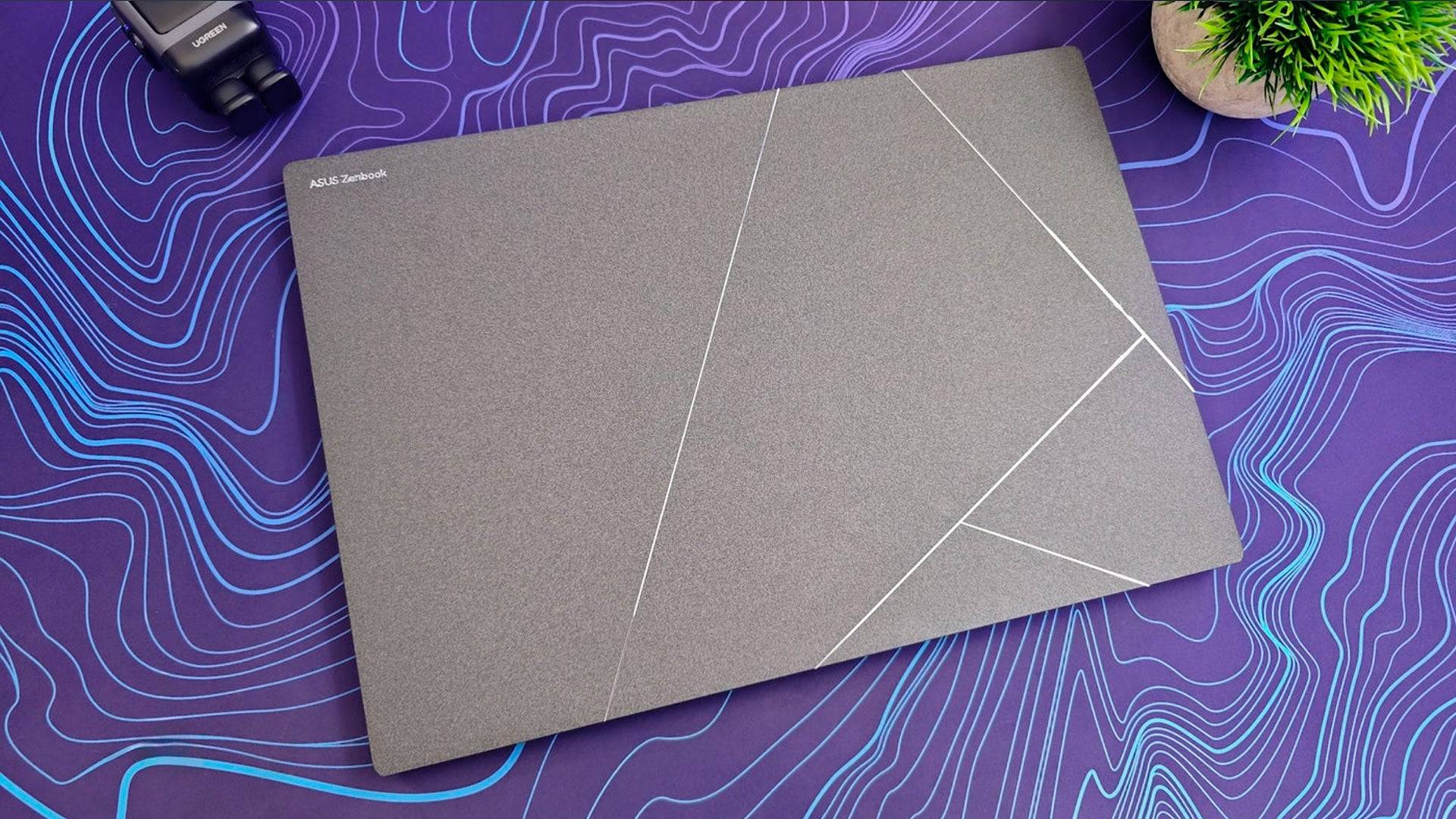CES 2025 Unveils Latest Gaming Laptop Trends
- By Chloe
- May 04,2025
CES always showcases a plethora of laptops, and this year was no exception. I explored the show floor and various packed suites and showrooms to identify the most significant trends driving gaming laptops in 2025. Here are the key themes we observed in the realm of gaming laptops this year.
A Huge Diversity of Designs
Gaming laptops have always offered a variety of styles, but this year felt particularly notable. Brands like Gigabyte and MSI are increasingly blending the lines between productivity and gaming, and there's an expectation that high-end gaming laptops must offer something "extra" beyond just superior hardware.
This year, you can anticipate a wider range of gaming laptop designs. For instance, the Gigabyte Aero series presents a sleek and professional look that could seamlessly blend into a business environment. In contrast, the MSI Titan 18 HX AI Dragonforged Edition boasts bold graphics on its lid, making a clear statement about its top-tier gaming capabilities.
 RGB lighting remains a staple, with features like wrap-around lighting rings, illuminated mechanical keyboards, and even trackpad lights. The Asus ROG Strix Scar series impressed with its AniME Dot Matrix LED display, capable of showing text and animations on its lid through a series of white LEDs.
RGB lighting remains a staple, with features like wrap-around lighting rings, illuminated mechanical keyboards, and even trackpad lights. The Asus ROG Strix Scar series impressed with its AniME Dot Matrix LED display, capable of showing text and animations on its lid through a series of white LEDs.
While the core designs remain familiar, expect to see some intriguing novelties this year alongside the usual spectrum of large and heavy to slim and light laptops equipped with a wide array of hardware.
 AI Assistants are Coming
AI Assistants are Coming
Last year, AI became a buzzword for laptops, though the implementations were often underwhelming. This year, multiple vendors showcased AI Assistants designed to control your PC without the need to manually open software.
During one demonstration, an MSI representative used a chatbot to select a game, prompting the assistant to automatically adjust the laptop's performance settings to match the game's intensity. While these systems are intended to function offline (though not always clearly stated), I remain skeptical about their efficiency compared to manual adjustments. We'll need to see how these features perform in real-world scenarios.
Mini-LED, Rollable Displays and Other Novelties
Mini-LED technology is finally making a significant impact in the gaming laptop market. Asus, MSI, and Gigabyte showcased Mini-LED laptops with flagship specifications and premium pricing. These displays featured over 1,100 local dimming zones to minimize blooming and enhance contrast, delivering exceptional brightness and vibrant colors. While OLED still offers superior contrast, Mini-LED's advantages, such as no risk of burn-in and higher sustained brightness, are promising. We can look forward to more models hitting the market soon.
We also encountered some intriguing novelties. The ASUS ROG Flow X13, returning after a year's hiatus, now supports eGPUs via USB4, moving away from proprietary connections. Asus demonstrated it paired with a new eGPU capable of housing up to an RTX 5090. Meanwhile, Asus also showcased the Zenbook Duo, a dual-screen productivity laptop, but it was Lenovo's ThinkBook Plus Gen 6 Rollable that stole the show. This isn't a gaming laptop, but it's the first notebook to feature a rollable OLED display, expanding from 14 inches to 16.7 inches at the press of a button. While the concept looks awkward and durability concerns linger, it's a genuine product available for purchase, with potential for improvement as the technology evolves.
 Ultrabooks Continue to Rise, Even for Gaming
Ultrabooks Continue to Rise, Even for Gaming
Ultrabooks are increasingly prevalent, even within gaming line-ups. Major manufacturers now offer gaming ultrabooks, characterized by their thin, light, and minimalist designs. Gigabyte, for instance, has revamped its Aero series to embrace this form factor, delivering laptops that are both visually appealing and functional.
This trend makes sense for gamers who don't need to run the latest titles at maximum settings. These ultrabooks offer portability and productivity without sacrificing gaming performance. As I noted in my review of the Asus TUF Gaming A14 last year, it's possible to equip these machines with dedicated graphics cards while maintaining their on-the-go productivity benefits.
 Moreover, by tweaking settings, users can bypass the need for high-end dedicated graphics cards like the RTX 4050M. The latest AMD and Intel processors boast impressive integrated graphics capabilities, enhanced by technologies like AMD FidelityFX Super Resolution and Intel XeSS, which can make even demanding games playable. For casual gamers, this performance might suffice, prompting questions about the future necessity of lower-end dedicated GPUs.
Moreover, by tweaking settings, users can bypass the need for high-end dedicated graphics cards like the RTX 4050M. The latest AMD and Intel processors boast impressive integrated graphics capabilities, enhanced by technologies like AMD FidelityFX Super Resolution and Intel XeSS, which can make even demanding games playable. For casual gamers, this performance might suffice, prompting questions about the future necessity of lower-end dedicated GPUs.
Cloud gaming services such as Xbox Cloud Gaming and Nvidia GeForce Now further enhance the appeal of these ultrabooks, offering robust gaming experiences without requiring specialized gaming hardware.
The world of gaming laptops is buzzing with exciting developments, and we'll keep you updated throughout the year. What trends caught your eye? Let us know in the comments below!
Latest News
more >-

-

-

- Sleeping Dogs Movie Casts Simu Liu as Wei Shen
- Nov 10,2025
-
-

- AFK Journey Teams Up With Fairy Tail Anime
- Nov 09,2025



